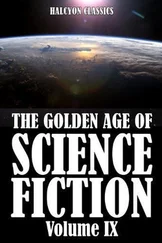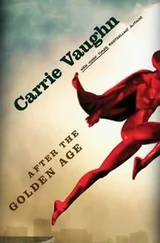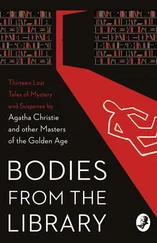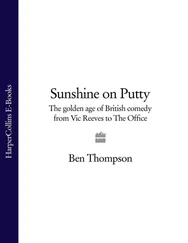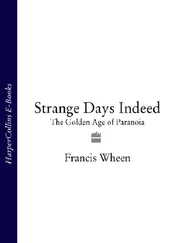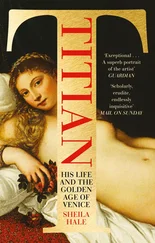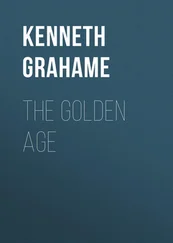Michal Ajvaz - The Golden Age
Здесь есть возможность читать онлайн «Michal Ajvaz - The Golden Age» весь текст электронной книги совершенно бесплатно (целиком полную версию без сокращений). В некоторых случаях можно слушать аудио, скачать через торрент в формате fb2 и присутствует краткое содержание. Год выпуска: 2010, Издательство: Dalkey Archive Press, Жанр: Современная проза, на английском языке. Описание произведения, (предисловие) а так же отзывы посетителей доступны на портале библиотеки ЛибКат.
- Название:The Golden Age
- Автор:
- Издательство:Dalkey Archive Press
- Жанр:
- Год:2010
- ISBN:нет данных
- Рейтинг книги:4 / 5. Голосов: 1
-
Избранное:Добавить в избранное
- Отзывы:
-
Ваша оценка:
- 80
- 1
- 2
- 3
- 4
- 5
The Golden Age: краткое содержание, описание и аннотация
Предлагаем к чтению аннотацию, описание, краткое содержание или предисловие (зависит от того, что написал сам автор книги «The Golden Age»). Если вы не нашли необходимую информацию о книге — напишите в комментариях, мы постараемся отыскать её.
is Michal Ajvaz’s greatest and most ambitious work.
The Golden Age
The Golden Age — читать онлайн бесплатно полную книгу (весь текст) целиком
Ниже представлен текст книги, разбитый по страницам. Система сохранения места последней прочитанной страницы, позволяет с удобством читать онлайн бесплатно книгу «The Golden Age», без необходимости каждый раз заново искать на чём Вы остановились. Поставьте закладку, и сможете в любой момент перейти на страницу, на которой закончили чтение.
Интервал:
Закладка:
Later some reader who was searching in vain for a blank space in which to make his insertion, and who did not wish to transcribe a whole page, came up with the idea of writing his contribution on a new sheet, which he would then stick — by means of a thin strip of paper — to the word or sentence in the pre-existing text to which his insertion was related. In this way it became the practise to paste insertions in the Book ; on to the pasted-in sheets other pasted-in sheets were added, others on to these, and so on. When I imagine what the Book must have looked like in those days, I see its covers as the cracked shell of a wounded crab; spilling out of confinement there are strips of paper, upon which at various points have been stuck other strips of paper, which themselves sprout yet more such strips. All this paper either lies limply on a table or flutters in the wind and rustles. Periodically someone tries to stuff it within the covers as one would try to stuff heaps of underwear into an under-sized suitcase.
It is out of these beginnings that today’s relatively simple and convenient use of the Book has developed. In terms of its form the Book is like a foldout picture-book; this form recurs on all its levels. Whenever someone wishes to make an addition to the Book , he does not violate the pre-existing text, nor does he transcribe the page in question; he writes his contribution on any long strip of paper and folds it into a concertina. Should he choose to make a longer insertion, all he needs to do is paste a second folded strip on to the end of the first. Once the reader-author has finished his contribution, he tucks it into an ear-shaped pocket, which he pastes in using the juice of the berries of one of the island’s trees; the pocket is stuck by the same agent above the word or term in the pre-existing text to which it refers and whose content it develops. (But the hidden content of every object is the rest of a universe, tied up in that object; and so the Book has erased the difference between the explanatory note and the digression, or rather it has revealed that the distinction was always an illusory one. The hidden content of every part of such an insertion/explanation/digression constitutes a whole universe, making it something very large, which is not at all what it seems.) We might describe the ear of an insertion as a three-dimensional bracket. The pocket is easy to unstick: should another reader-author wish to write an insertion to an insertion, all he needs to do is repeat the whole process and to paste another, smaller ear at the appropriate place on the first insertion.
This bulking of the Book from the inside is possible because the paper used is extraordinarily light and thin but also very tough. This paper is produced from reeds which grow on the banks of the lower reaches of the river. It is made by the islanders during the periods they spend in the lower town. And here their journey to work rarely takes much longer than it does when they are living in their homes in the upper town, where it is their custom to stop off in the family mine on the way from bedroom to pantry. There is no shortage of reed in the lower town. Reed has swallowed up the statues and obelisks which stand along the river. Like a mighty but patient army it has advanced along the streets that lead from the river to the edges of town, has penetrated the courtyards of the palaces and the entrance halls of mansions and apartments alike. I saw town-centre apartments which brought together reed from the riverside and sand from the outskirts. Nor is there any shortage of demand for the paper-makers’ wares: the interest of the bibliophiles of Europe in light but tough paper never wanes. Paper is the island’s third article for export, after gemstones and fruit jellies. (I once discovered in an Amsterdam bookshop an annotated edition of the collected works of Nietzsche printed on the island’s paper. It had been possible to contain these in a single volume, which included all the letters, drafts and notes of Nietzsche’s estate — those on the forgotten umbrella, too — and an extensive commentary by the publisher.)
Owing to the extraordinary thinness of the paper, insertions could be made in the Book on many levels. Each series of insertions reached a different depth; I don’t know which were the deepest because I didn’t open all the Book ’s pockets (and I didn’t reach the bottom of all those I did open). It was impossible to determine the number of levels of insertion by the thickness of the pocket: some of the more swollen pockets had only one or two levels, as the stories recounted in them were long. The deepest I ever reached into a pocket was the eleventh level — but I’m not saying that it went no further than this. As the case may be, the island’s Book had more levels of insertion than the nine counted by Michel Foucault in Raymond Roussel’s New Impressions of Africa .
The life of the pages
Although parenthetic pockets are a very practical arrangement, their main significance is to enable a reading of the Book in a great variety of ways; at any given moment the Book is equivalent to many books of different kinds. The reader might ignore the pockets altogether (the story-lines and situations they punctuate remain self-contained without reference to the pockets); he might explore the contents of a single pocket, reaching right down into its depths; he might overlook some of the pockets and delve into others; he might read only the text at — let’s say — the third or fourth level of insertion; with reference to some numerical key, he might determine beforehand the number of interior pockets he is going to open and read.
It was common practise for readers of the Book to alternate and combine all these approaches. Reading became a labyrinthine journey whose directions were various. It twisted and turned, it drove backwards and forwards; it might follow one direction for a long time before plunging down to the deepest dungeon (built by the king of Babylon in playful protest that the building of a tower was forbidden to him), then rising upwards like a fanciful staircase. Also subject to constant change was the character of the energy coursing through these journeys; sometimes reading proceeded at a stampede, while at others it was like a furious digging, a systematic underground exploration, or an abstracted tumble into parenthetic holes followed by a disoriented crawling back out of them; it might skate lightly on a smooth surface, step indecisively or gingerly on cracking ice, circle lethargically, panic and submerge itself, reel first one way, then the other. Reading was always a kind of ballet, a source of both joy and torment.
All these rhythms and routines were born out of a tension between two basic forces and two kinds of longing that corresponded to these forces. In their purest form both kinds of longing became an unhealthy obsession. I knew this better than the islanders; the islanders knew how to float in the maelstrom created by the clash of these two currents while I was always swept towards the source of one or the other. The initial longing was the quest for the very bottom of every insertion, for the Book ’s very lowest point amid its many branches; it demanded the inspection of the Book ’s maze of dungeons in the hope of finding treasure there. (The reader was sure that a complicated labyrinth such as this was hiding some kind of treasure.) Then there was the second longing — to skate lightly over all pockets, refusing to be seduced by their depths with their promised delights otherwise only to be found in dreams; this was the desire not to descend to the evil of the utterance (which dulls the glow of simplicity), the desire not to betray the magical stories that flutter in the murmur of the void, stories replete with bright-coloured gemstones shining in the dark, dancing on terraces and night-time gardens by the sea.
Читать дальшеИнтервал:
Закладка:
Похожие книги на «The Golden Age»
Представляем Вашему вниманию похожие книги на «The Golden Age» списком для выбора. Мы отобрали схожую по названию и смыслу литературу в надежде предоставить читателям больше вариантов отыскать новые, интересные, ещё непрочитанные произведения.
Обсуждение, отзывы о книге «The Golden Age» и просто собственные мнения читателей. Оставьте ваши комментарии, напишите, что Вы думаете о произведении, его смысле или главных героях. Укажите что конкретно понравилось, а что нет, и почему Вы так считаете.



